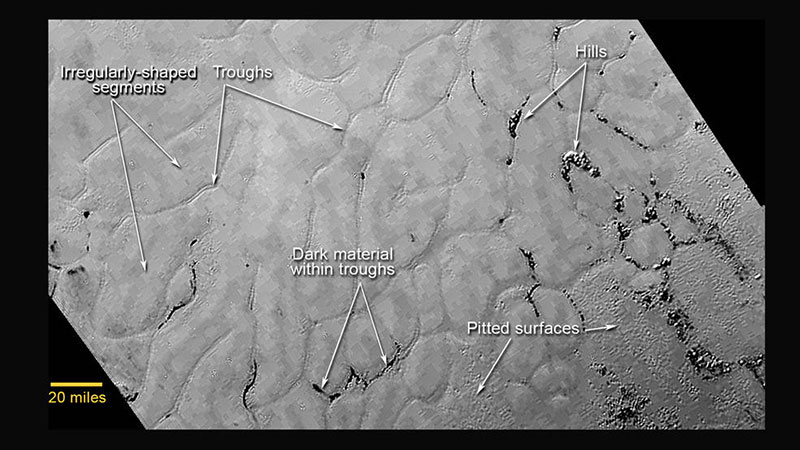
Frozen plains have been discovered in recent scans of Pluto, which was released by NASA on Friday. NASA also said that their data revealed a craterless surface no more than 100 million years old. Presently, the organization is still trying to make sense of the recent finding.
"This terrain is not easy to explain," explained Jeff Moore, leader of the New Horizons Geology, Geophysics and Imaging Team (GGI) at NASA's Ames Research Center in Moffett Field, California. "The discovery of vast, craterless, very young plains on Pluto exceeds all pre-flyby expectations."
The first frame of the high-resolution scans of Pluto was released by NASA on Wednesday, less than a day after New Horizons completed its successful flyby of the dwarf planet. As of Friday, the probe has already left Pluto, and is speeding toward the inner Kuiper belt.
NASA will name the icy plain region "Sputnik Planum," in honor of Earth's first artificial satellite. The area's surface is broken up by irregular segments estimated to be about 12 miles (20km) apart. Shallow troughs border the area between the segments. Scientists at NASA currently have two theories regarding how these segments were formed. The first theory suggests contraction much in the same way mud dries, while the other theory supports convection.
The New Horizons probe started its groundbreaking journey back in 2006, and has done a flyby of the planet Jupiter. Every time the object transmits data, it takes about 16 months for that information to reach researchers on Earth.
"I'm delighted at this latest accomplishment by NASA, another first that demonstrates once again how the United States leads the world in space," said John Holdren, assistant to the President for Science and Technology and director of the White House Office of Science and Technology Policy, in an official NASA statement.
Holdren also shared that the recent mission to Pluto was part of an effort to pave the way for future manned missions into space.
"New Horizons is the latest in a long line of scientific accomplishments at NASA, including multiple missions orbiting and exploring the surface of Mars in advance of human visits still to come," Holdren continued. "As New Horizons completes its flyby of Pluto and continues deeper into the Kuiper Belt, NASA's multifaceted journey of discovery continues."
USAToday reported that the probe has enough power to operate until the mid-2030s. However, the length of the mission depends on funding. New Horizons will not reach the Kuiper Belt until 2017.














